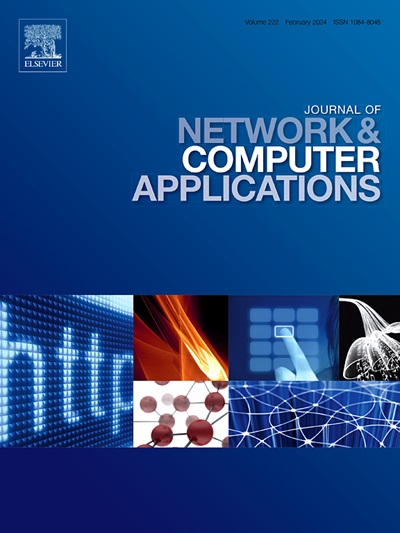SAKA:在边缘雾多云计算环境中具有可配置密钥演进的可扩展身份验证和密钥协议方案
IF 8
2区 计算机科学
Q1 COMPUTER SCIENCE, HARDWARE & ARCHITECTURE
引用次数: 0
摘要
雾计算可以有效解决多云环境下集中式云计算中存在的网络拥塞、数据丢失、时延高、能耗大等问题。但是,它对身份验证和密钥协议模式提出了额外的挑战,特别是在可伸缩性、开销和安全性方面。为了解决这些挑战,本文提出了一种可扩展的身份验证和密钥协议(SAKA)方案,该方案具有为多云环境中的雾计算量身定制的可配置密钥演进。提出的SAKA方案集成了一个具有良好同步特性的可配置密钥演化机制,并引入了时间约束,以解决多云环境中并发引起的密钥同步问题。这种方法允许根据特定的应用程序需求调整可调整的密钥更新周期,从而平衡安全性和开销。此外,SAKA方案使用椭圆曲线Diffie-Hellman密钥交换方法和预共享密钥在雾网关和云应用之间建立会话密钥。这种方法消除了对资源密集型证书的需求,并确保了完美的前向保密。此外,在提出的SAKA方案中实现广播机制减少了多云环境下的计算和通信开销,从而增强了可扩展性。使用正式和非正式方法进行的综合安全性分析的结果证明了所提出的SAKA方案是安全的。最后,通过与现有方案的比较,验证了SAKA方案在多云环境下雾网关安全认证方面的优势。提出的SAKA方案将单实体身份验证的计算开销减少了50%,对于多实体场景的计算开销减少了67%。本文章由计算机程序翻译,如有差异,请以英文原文为准。
SAKA: Scalable authentication and key agreement scheme with configurable key evolution in edge-fog-multicloud computing environments
Fog computing can efficiently address problems in centralized cloud computing in multi-cloud environments, such as network congestion, data loss, high latency, and excessive energy consumption. However, it poses additional challenges to authentication and key agreement schemes, especially regarding scalability, overhead, and security. To address these challenges, this paper proposes a scalable authentication and key agreement (SAKA) scheme with configurable key evolution tailored for fog computing in multi-cloud environments. The proposed SAKA scheme integrates a configurable key evolution mechanism with a sound synchronization feature and introduces timing constraints to address concurrency-induced key synchronization issues in multi-cloud environments. This approach allows for tailoring the adjustable key renewal period to specific application needs, thus balancing security and overhead. In addition, the SAKA scheme uses the elliptic curve Diffie–Hellman key exchange method with a pre-shared key to establish session keys between fog gateways and cloud applications. This approach eliminates the need for resource-intensive certificates and ensures perfect forward secrecy. Further, implementing the broadcast mechanism in the proposed SAKA scheme reduces computational and communication overhead in multi-cloud environments, thus enhancing scalability. The results of a comprehensive security analysis conducted using both formal and informal methods prove that the proposed SAKA scheme is secure. Finally, a comparison with existing schemes demonstrates that the SAKA scheme excels in security authentication for fog gateways in multi-cloud environments. The proposed SAKA scheme reduces computational overhead by 50% for single-entity authentication and by up to 67% for multi-entity scenarios.
求助全文
通过发布文献求助,成功后即可免费获取论文全文。
去求助
来源期刊

Journal of Network and Computer Applications
工程技术-计算机:跨学科应用
CiteScore
21.50
自引率
3.40%
发文量
142
审稿时长
37 days
期刊介绍:
The Journal of Network and Computer Applications welcomes research contributions, surveys, and notes in all areas relating to computer networks and applications thereof. Sample topics include new design techniques, interesting or novel applications, components or standards; computer networks with tools such as WWW; emerging standards for internet protocols; Wireless networks; Mobile Computing; emerging computing models such as cloud computing, grid computing; applications of networked systems for remote collaboration and telemedicine, etc. The journal is abstracted and indexed in Scopus, Engineering Index, Web of Science, Science Citation Index Expanded and INSPEC.
 求助内容:
求助内容: 应助结果提醒方式:
应助结果提醒方式:


